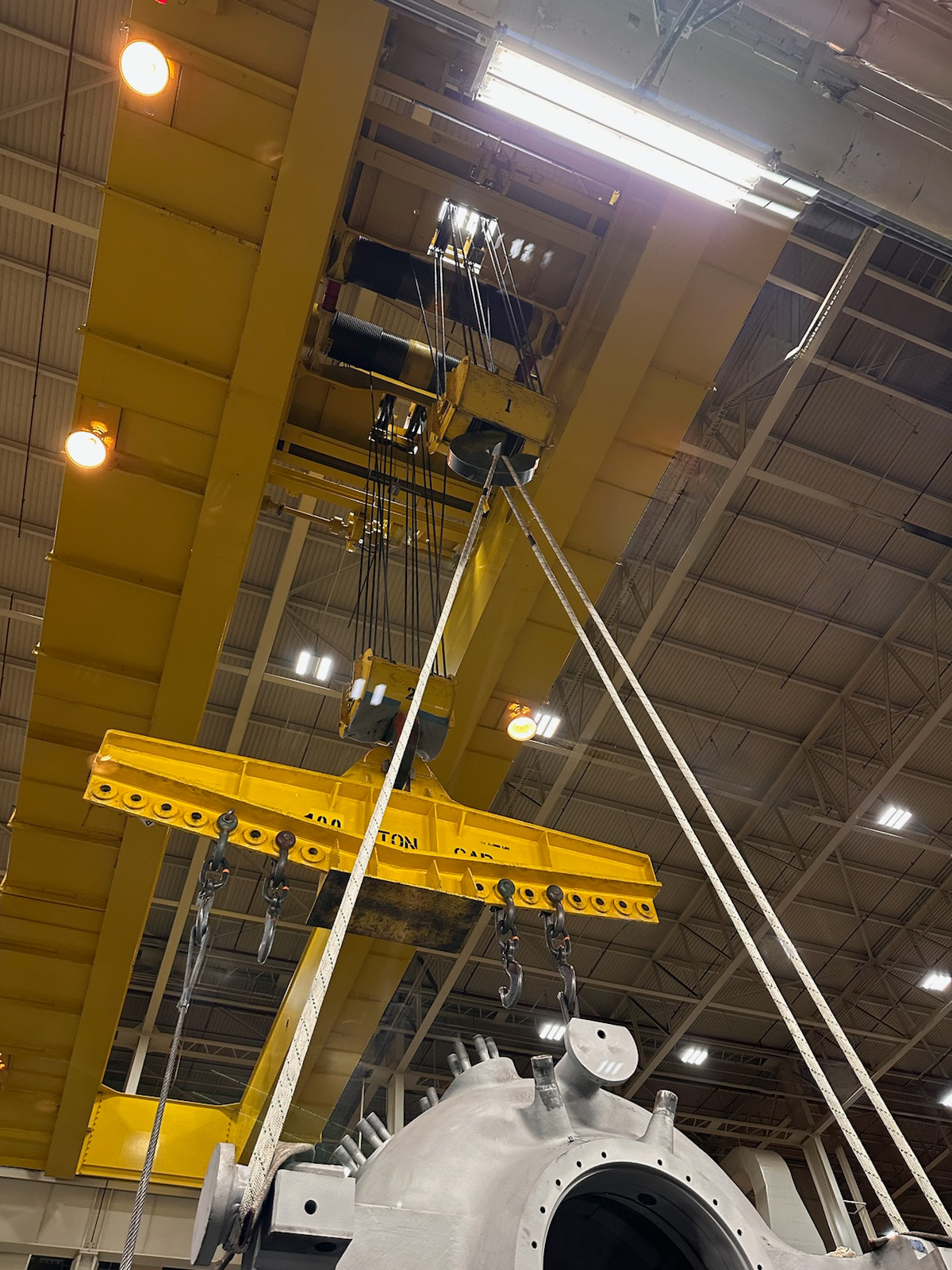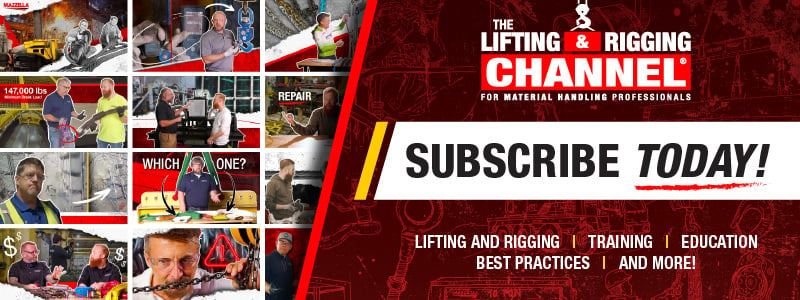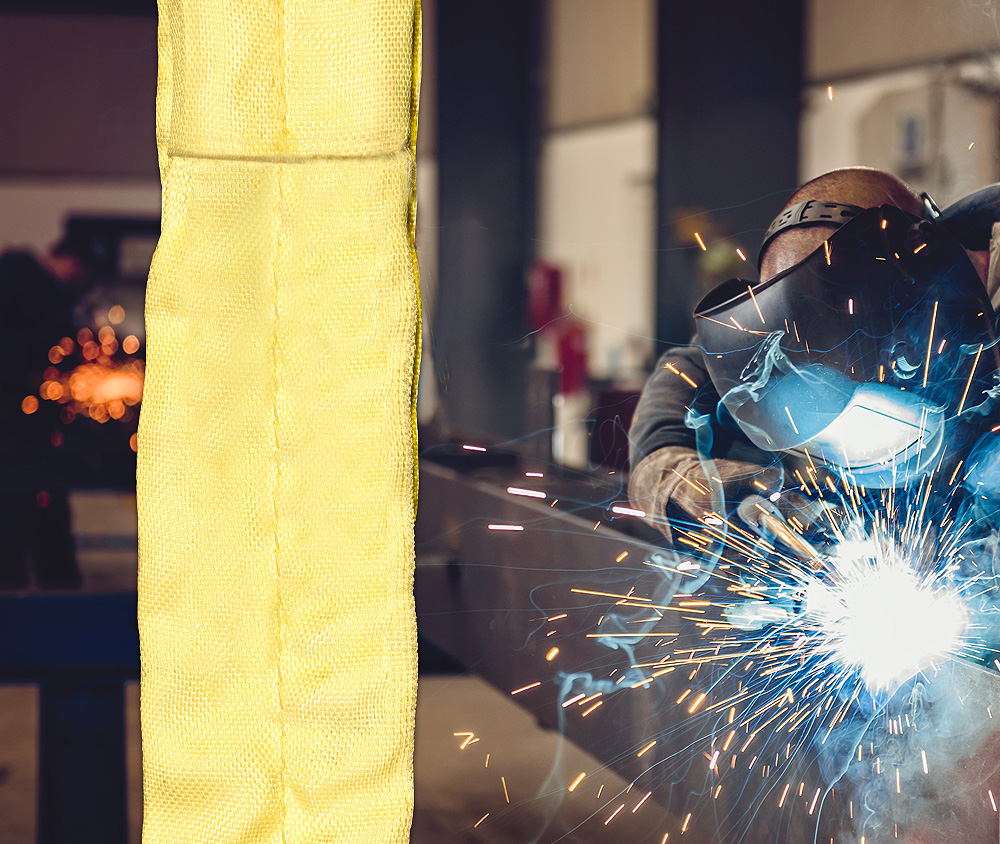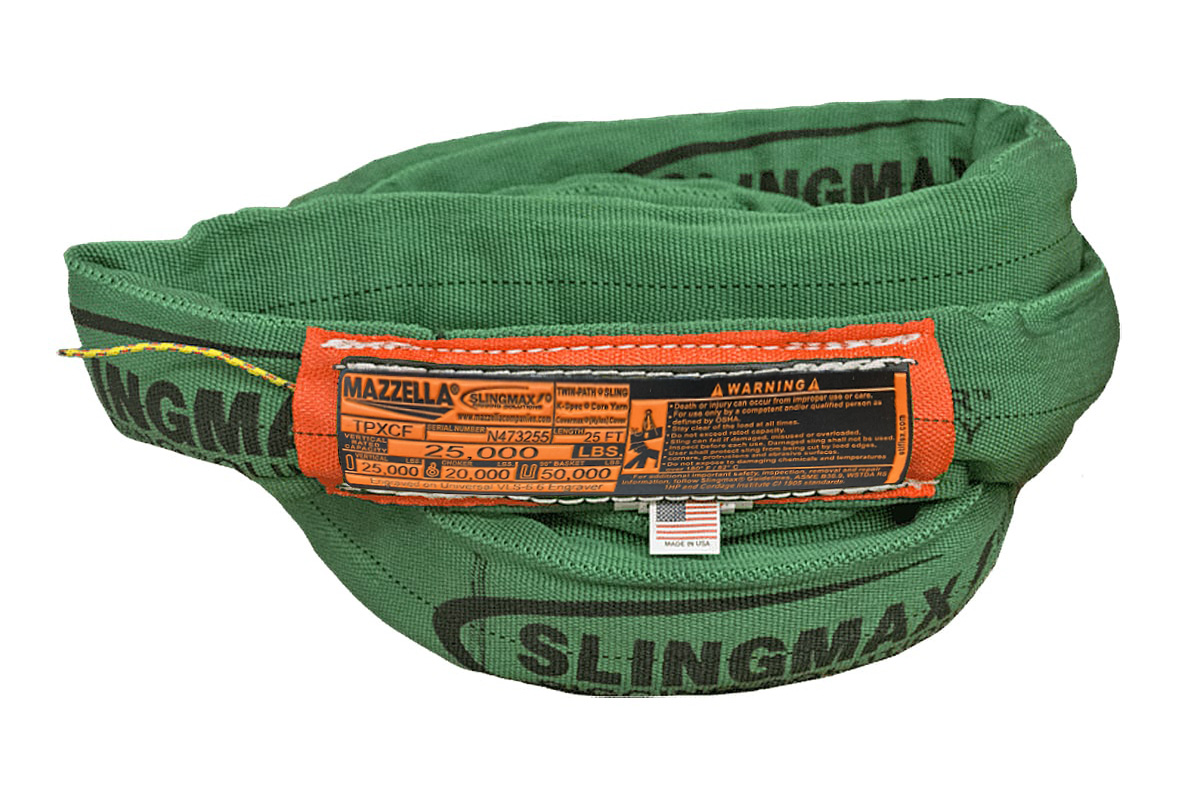Which Slingmax® Lifting Sling Is Right for You?
SlingMax offers several lifting sling models—learn which one best fits your application.
Having the right equipment for the job is the best way to ensure a safe working environment, including your lifting slings. And finding the appropriate lifting sling for your application is not always easy, especially with so many different ones on the market.
Lifting slings can be found in just about every job site or environment: steel mills, mechanical garages, automotive assembly lines, manufacturing plants, construction and excavation sites, mining, and much more. As technology advances in the lifting industry, new lifting slings have been created to meet the unique environments each rigger works in.
Our partners at Slingmax Rigging Solutions understand this and have developed four high-performance synthetic roundsling models: the Twin-Path® sling, the Helix™ Sling, the Single-Path sling, and the Sparkeater® sling. While all of these are backed by engineered data and manufactured with high-quality material, each one was designed with a specific application in mind.
Whether you’ve been using Slingmax products for years or just heard about them last week, you may be asking yourself, “How do I decide which sling is appropriate for my application while being light weight and strong?”
To help your decision-making process, our article will review each Slingmax synthetic lifting sling, reviewing their lifting capacities, unique features, and their ideal work applications.
Why Would You Use High-Performance Synthetic Roundslings?
High-performance roundslings offer riggers a versatile and light weight alternative to wire rope lifting slings and alloy chain slings. Not only can they be used in a vertical, basket, or choker hitch, but they can also be used to handle more delicate and irregularly-shaped loads.
High-performance roundslings are noticeably lighter than wire ropes or chain slings, making them easier for workers to move around a job site and easier to store.
What are Slingmax’s Different Lifting Sling Models?
The Twin-Path® Sling

Slingmax is best known for their innovative Twin-Path product offering. Their most popular design and flagship model, the Twin-Path® roundsling is a versatile sling which has two individual paths of internal load-bearing fibers –providing extra redundancy, if damage were to occur to one of the paths during a lift.
The two paths are made from K-Spec® core yarn, a blended load bearing core fiber that is five times stronger than equivalent nylon and polyester fibers. Compared to traditional synthetic slings, K-Spec® core yarn has less than 1% stretch— similar to a steel sling. Its unique design makes the Twin-Path® just as strong as steel lifting slings while being a fraction of the weight.
Twin-Path® slings have the highest lifting capacity of Slingmax’s product offerings, with a standard capacity of up to 800,000 lbs. (400-ton). Consequently, they’re popular in a variety of industries where heavy lifting projects are common, including:
- Construction and excavation
- Oil and gas
- Power generation
- Aerospace and military
- Port yards and ship building
- Manufacturing and general industry
If your application is in an environment that has high heat (above 180F), you may want to consider the Sparkeater® sling. The Twin-Path® sling can sometimes be too wide for some lift points. If you need a narrower profile, Helix slings may be the better option.
The Helix™ Sling

Slingmax’s newest product offering, the Helix™ sling, is a synthetic fiber, high-performance roundsling designed for more constricted lift points.
Its smaller profile and narrow diameter now allow high-performance roundslings to be used in areas and applications that were previously dominated by wire rope lifting slings.
While the Helix™ has a smaller profile, you don’t have to sacrifice strength and durability. They have a vertical rated capacity of up to 200,000 lbs., and Slingmax is working on increasing their catalog capacities. All Helix™ slings feature rifled cover® technology, a patented technology that increases the sling’s strength-to-weight ratio and allows for repeatability in the manufacturing process. This technology also strengthens the load bearing core fibers by 17%.
Helix™ slings are ideal for any application where you have a constricted area to do your lifting. This, with multiple customization offerings, quick turnaround on production time, and high lifting capacity make them a great fit for a variety of industries. Helix’s can be used in:
- Power generation plants and clean energy projects to lift heavy turbines
- General manufacturing and assembly lines
- Construction and excavation sites
- Die lifting
Like all Slingmax slings, they are also neutrally buoyant and unaffected by seawater, which makes them great for marine applications.
A negative is that Helix™ slings do not come with the Check-Fast® inspection system that a Twin-Path sling, a single path sling, and Sparkeater® have. Additionally, they are not repairable.

The Sparkeater® Sling

When rigging in a hot environment, the Sparkeater® sling is the best choice. Designed to lift in and around environments up to 300F, Sparkeaters have a Twin-Path® design but are made with different core fibers and cover material that give it added heat durability—much higher than the Twin-Path’s maximum temperature of 180F.
A Sparkeater® can be used in any shop or application where there’s welding or any type of exposure to high heat. This includes:
- Welding shops
- Power generation plants
- Furnaces
- Steel mills
Historically, alloy chain slings are used in these environments. Now, riggers in these spaces can use a significantly lighter sling in the Sparkeater® and avoid hauling heavy chain slings around a facility, saving them time and reducing the chance of back or joint injuries.
The Sparkeater® does have a lower capacity—only available up to 100,000 lbs. So, while you get that high temperature durability, its capacity is relatively low compared to other Slingmax products. But you can use the Sparkeater® in any application where a Twin-Path® is used, as long as it’s within that capacity limit. Although Sparkeaters have extra heat resistance, sustained high-heat application over 300F will not be a good fit. In this case, use an alloy chain sling.
Currently, the Sparkeater® is only available in a Twin-Path® design. It’s also important to note the Sparkeater® is the most expensive sling model because of the specialized material it’s made with.
The Single-Path Sling

The Single-Path sling is one of Slingmax’s more affordable options. When compared to a Twin Path®, it’s pretty similar in terms of material, including the same K-Spec® core fiber, Check-Fast® overload indicator, and the same dual Covermax® jacket material.
Single-Path slings are less expensive than a Twin-Path® sling because it requires less material and time to manufacture, but this also means they do not offer the extra redundancy in case of damage that a Twin-Path offers.
They’re easy to manufacture and can be produced quickly with short lead times. The overall lifting capacity goes up to 200,000 lbs., which is comparable to the Helix™ sling.
If you’re lifting a heavy load, but not as heavy as 800,000 lbs., not concerned with added redundancy, and working with a tighter budget, then a Single-Path sling could be the best option for you.
Which Slingmax Lifting Sling Should You Choose?
When you’re looking for a new sling, it’s important to make sure you do your research.
To summarize:
- Sparkeater® slings are the best choice for any hot environment but cost more due to specialized material
- Single-path slings are great if you’re working on a tighter budget and lifting loads around 200,000 lbs. or below
- Helix™ slings are ideal for any application where you need a sling with a smaller diameter to fit into more narrow hardware
- Twin-Path® Slings are the best choice for critical and heavy-duty lifts requiring light weight rigging. They can be used in almost any application where you would use a wire rope lifting sling or an alloy chain sling.
No matter which Slingmax sling you select, you should always pair it with an engineered sling protection solution. Thankfully, Slingmax offers several options that pair perfectly with their slings, including:
- CornerMax® Pads
- CornerMax® Sleeves
- The Spider Sleeve
- Synthetic Armor Pads
Choosing Other Lifting Slings
Any environment where temperatures could exceed 300F will call for you to use a more traditional chain lifting sling. Additionally, Slingmax lifting slings are made of synthetic material, so if your application is exceptionally abrasion heavy, they might not be the best solution.
How Can You Purchase a Slingmax Lifting Sling?
We hope this article helped you better understand the different lifting slings Slingmax offers and which one best fits your application.
Every Slingmax lifting sling, regardless of its model, will perform very well. All of them are manufactured using high quality materials and are backed by engineering data, several rounds of load testing, numerous break tests, repairability options, and a stellar reputation.
We understand you still may have some questions, and we’re here to help. Mazzella is one of the largest accredited Slingmax distributors in the country, so contact your local Mazzella representative to help decide which lifting sling is best for you.
Also, watch our video with Slingmax showcasing the new Helix™ lifting sling, or learn more about the flagship Twin-Path High-Performance Roundsling.
Copyright 2025. Mazzella Companies.

